Tested: Subaru Wilds Out with the 2022 Outback Wilderness
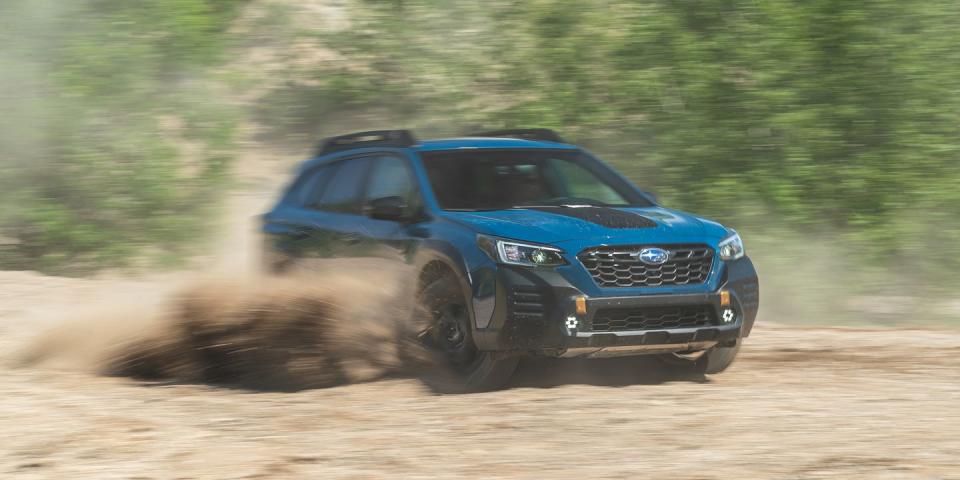
UPDATE 7/8/21: This review has been updated with test results.
As if the brand voted best in the world by Mossy Redwood Quarterly needed to print it on its cars, Wilderness is going to be a reoccurring name in new Subaru models. The 2022 Outback Wilderness is the first out the door. The Outback was already a popular choice for outdoorsy types who weren't into hardcore rock-crawling, and the Wilderness package incorporates changes that Outback owners were already making to their cars to make them more off-road capable—such as lift kits and all-terrain tires—as well as details to make the tall wagon easier to live with back at the campground, including a washable rear seatback and a hatch-mounted cargo light. The result looks like a Subaru Outback that spent six months in the gym. It's wider, tougher, and standing taller but still a comfortable, pliable ride with plenty of station-wagon utility.
Spicing up the Outback was an easy task because the basic recipe was already a winner. Who doesn't like a chunky hatchback? Subaru simply took what was already good about the Outback and added more of it. More cladding, more ride height, and more features specifically intended for outdoor activities. External changes might not be obvious to non-Subie fans, but current Outback owners will notice how the Wilderness tucks the corners of the front fascia for better cliffside clearance and extends the plastic cladding up the nose and above the wheel wells to lessen the likelihood of shrub-related scratching. Everything chrome on the standard Outback is satin black on the Wilderness, and important action points, such as tow-hook anchors and roof-rail tiedowns, are a bright anodized copper, giving the Wilderness a pirate's saucy gold-tooth grin. "Avast, mateys, I've come to haul your canoe." With a tow rating of 3500 pounds, the Wilderness could actually tow a good-sized boat, and the redesigned roof rack can haul up to 220 pounds in motion and support 700 pounds while standing still. Conveniently, that means it can not only carry bikes or kayaks but could also hold a rooftop tent—just don't try to move an occupied rooftop tent.
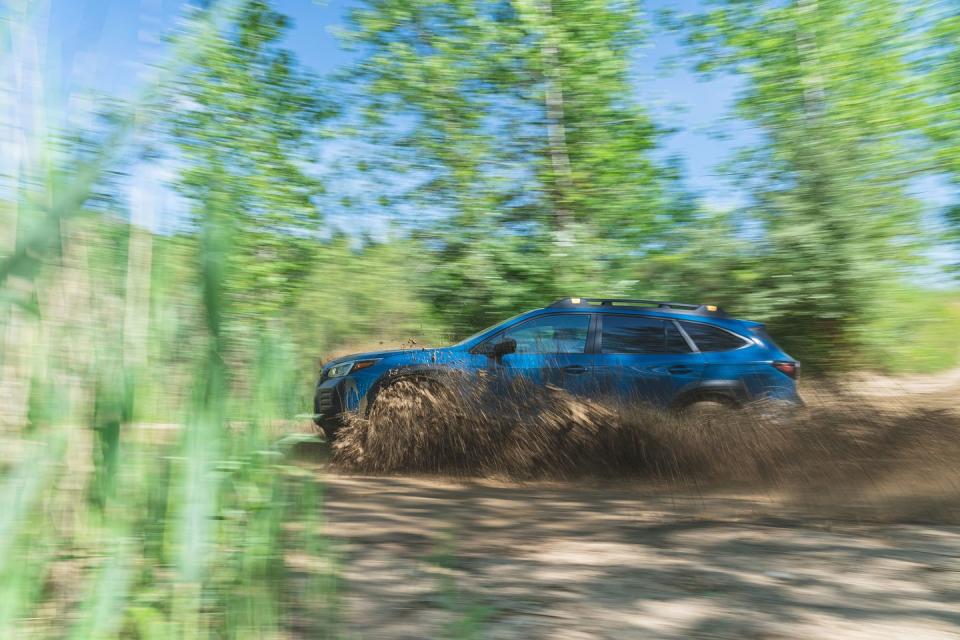
We haven't had a chance to sleep atop the Wilderness, but we did get it dirty. It can't steamroller its way over obstacles like a Jeep Wrangler, but it climbed some steep, shaley hills with all-wheel-drive aplomb. The Outback's off-road X-Mode has two options: a Snow/Dirt mode that minimizes wheelspin to climb slippery hills or slick driveways and a Deep Snow/Mud mode that allows more wheelspin to keep the car from getting bogged down. X-Mode also recognizes a downhill slope and automatically controls vehicle speed based on braking input, down to around 5 mph on a loose surface.
Along with sending us up and down sandy hills, Subaru had arranged a cairn of intimidating boulders, which we clambered over to demonstrate the Wilderness's goatlike agility and improved approach, breakover, and departure angles. Where the regular Outback would stuff its nose or drag its belly, the Wilderness cleared. To achieve the underside space, Subaru increased ground clearance to 9.5 inches, 0.8 inch more than the standard Outback. Taller springs also allow more compression travel, and the redesigned front and rear bumpers make a more forgiving hill climber. The end result is a 20.0-degree approach angle, a 21.2-degree breakover, and 23.6 degrees before you scrape the back bumper. It's not going to take a King of the Hammers trophy home, but you'll never meet a speed bump you need to brake for. If you don't tend to measure the angles of local obstacles—or fail to notice them, even with the help of the front-mounted 180-degree camera—you can add some optional underbody armor to minimize the repercussions of miscalculations.
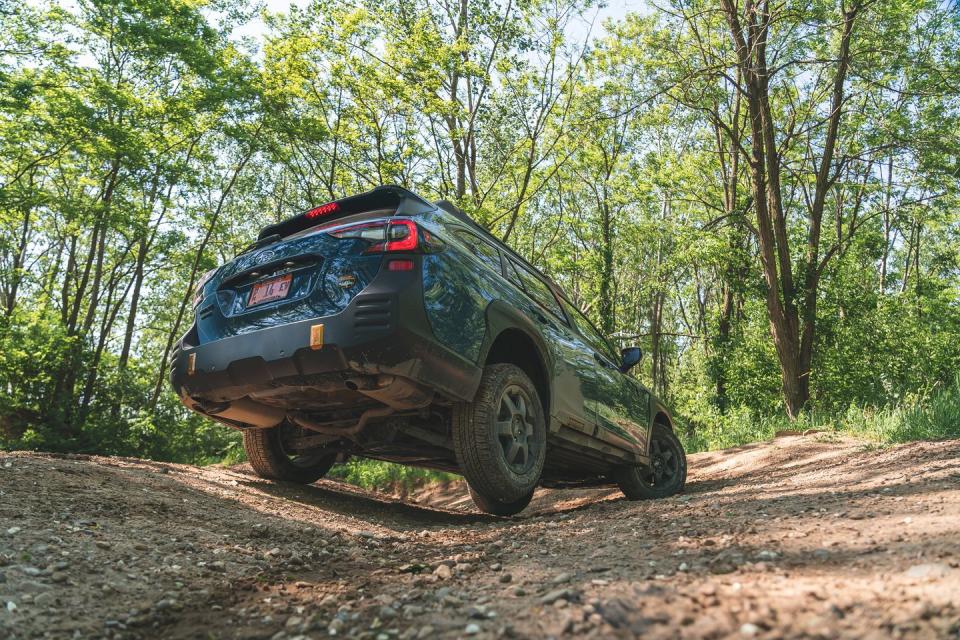
Under the hood, the Wilderness comes standard with a turbocharged 2.4-liter flat-four making 260 horsepower and 277 pound-feet of torque. It's backed by a continuously variable automatic transmission (CVT), which does its best to pretend to be an eight-speed automatic but can't always maintain the illusion. On steep hills or leaving a stoplight, it does more of an impression of stepped-on chewing gum—streeeeetch, and there we go, we're moving now. This CVT does its job, just not with any joy. At the test track, the combo hauled the 3973-pound Wilderness to 60 mph in 5.8 seconds and through the quarter-mile in 14.6 seconds at 96 mph, which makes our test car quicker than the last mechanically similar Outback we tested. That car needed 6.3 ticks to hit 60 mph and 14.8 seconds to cover the quarter-mile.
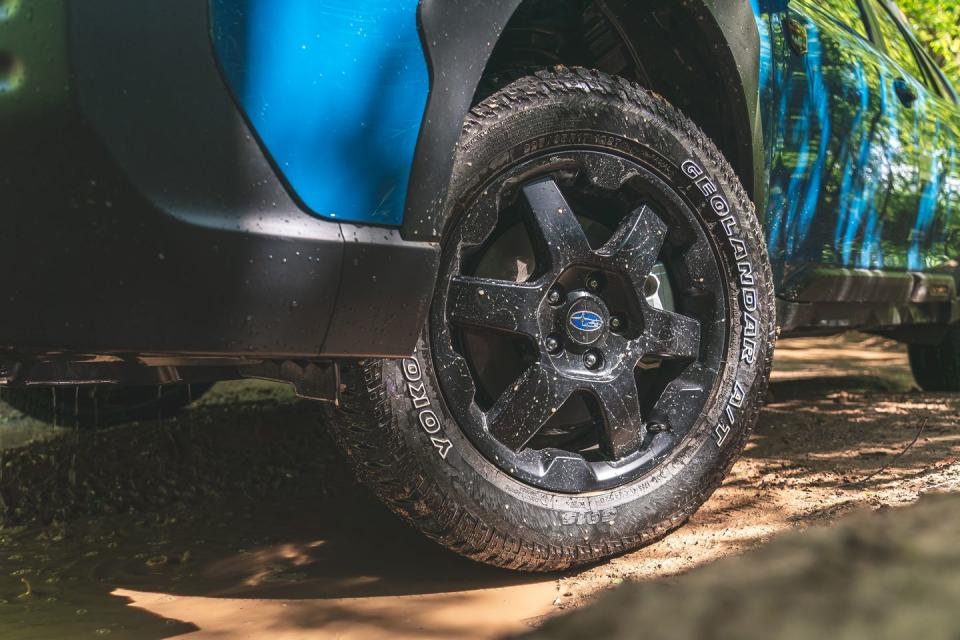
The Wilderness also is fleeter than a grizzly bear, which is an important detail in choosing an off-road machine. A determined bear could beat the Subaru to 30 mph, so make sure you get the jump on 'em. Just don’t go racing anyone, bears or otherwise, on a low fuel tank, as the Wilderness's gearing and tires lower the turbo Outback's EPA combined fuel-economy estimate from 26 mpg down to 24. We averaged 18 mpg overall, and the Wilderness returned 27 mpg on our 75-mph highway test, which is both 1 mpg better than its federal rating yet 1 mpg less than a standard Outback with the turbo-four.
On the road, the same dullness that plagues this Subaru's transmission can be found in its steering, and the tall sidewalls of the 225/65R-17 Yokohama Geolandar A/T tires mean the on-pavement ride is on the squishy side. This last observation is not a complaint. Not every vehicle needs to be a high-strung thoroughbred, and what you give up in high-speed cornering you can enjoy in cushioned ride comfort. That said, our test car posted a relatively low 0.74 g of grip on the skidpad and required a lengthy 191 feet to stop from 70 mph. However, if you do pop one of those Geolandars on the trail or the highway, there's a full-size spare on a matched alloy wheel, complete with tire-pressure monitor, under the cargo area in the back.
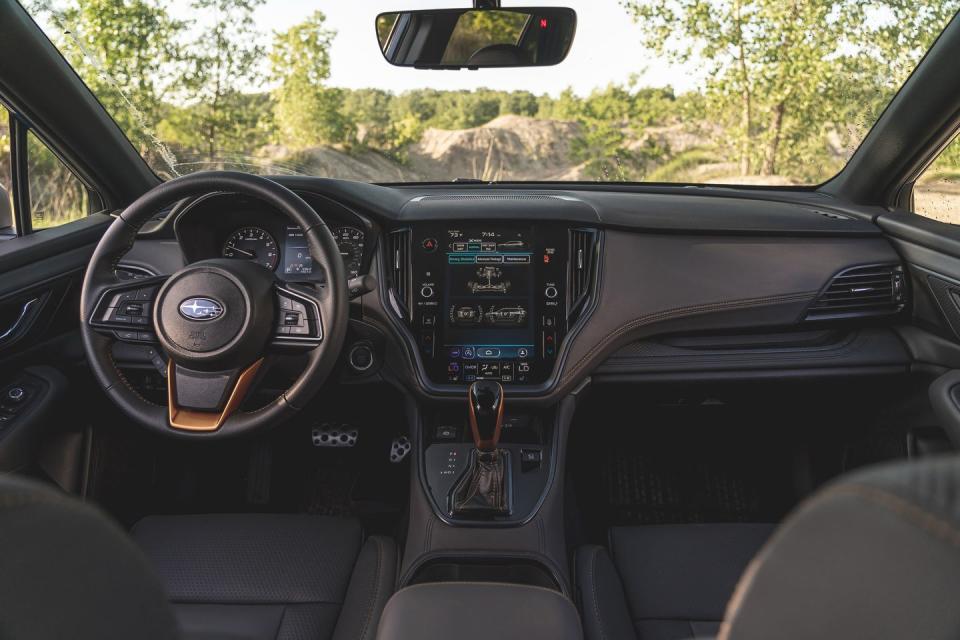
The interior of the Wilderness is attractive in a sensible way. The layout is ergonomically friendly, and the 11.6-inch touchscreen is mounted vertically, so it's all within reach of the driver. Apple CarPlay and Android Auto are standard, as is Subaru's full suite of driver's aids. There are a few options available, including a sunroof and reverse automatic braking, but the Wilderness comes pretty loaded even in its unoptioned form. The seats are covered in non-leather, water-resistant material, and the patterning and colors repeat the honeycomb of the grille and the copper of the exterior accents. With wet dogs and muddy gear in mind, Subaru's designers kept the headliner dark to hide scuffs, and the cargo area and that washable seatback are also waterproof. There's lots of room in the back seat and behind it. The rear seats are comfortable, with a folding rear armrest, USB ports, and optional seat heaters, perfect for getting cozy after someone has the bright idea to camp in the freezing cold desert over New Year's Eve. Not speaking from experience or anything.
While the Subaru Outback Wilderness can't keep you from making bad decisions about when and where to venture, it can get you there and back in comfort. With a starting price of $38,120, it's one of the more expensive Outback models. Our example with its power moonroof and upgraded infotainment cost $39,965, which would get you a decent Jeep Wrangler or Ford Bronco, but there's a subtle flex to off-roading in a unibody wagon versus a more traditional 4x4. Over the years, the Subaru Outback has certainly startled many a knobby-tired SUV driver by appearing on a trail long past the closest paved road, and the 2022 Outback Wilderness makes it that much easier to pick your way past the pavement.
You Might Also Like

 Yahoo Autos
Yahoo Autos 